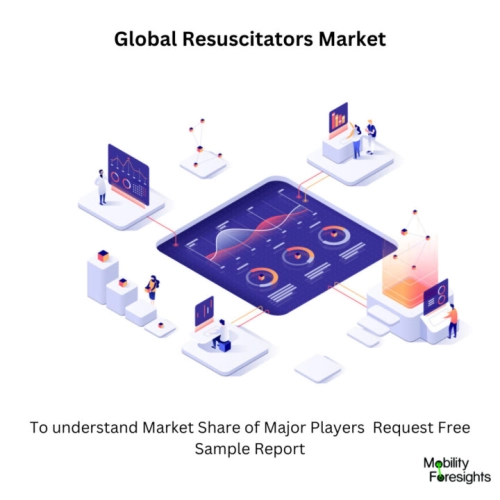
- Get in Touch with Us

Last Updated: Apr 25, 2025 | Study Period: 2024-2030
A resuscitator is a device that uses positive pressure to expand a person's lungs when they are unconscious and not breathing in order to keep them alive and receiving blood.
There are three primary types: a manual version (also called a bag valve mask), which consists of a mask and a sizable plastic bulb that must be pushed by hand to release air, or one that uses supplemental oxygen from a high-pressure tank.
The second kind is a breath-powered or expired air resuscitator. The Brooke Airway, which debuted as the first example of the second type. A resuscitator that runs on oxygen is the third type. These can either be operated automatically or manually and are powered by pressurised gas delivered by a regulator.
Time Cycled, Volume Constant Ventilators are the most common kind of gas-powered resuscitator. Pressure cycling devices like the Pulmotor were popular in the early days of pre-hospital emergency care but produced unsatisfactory results.

The Global Resuscitator Market accounted for $XX Billion in 2023 and is anticipated to reach $XX Billion by 2030, registering a CAGR of XX% from 2024 to 2030.
In order to lower newborn mortality, Royal Philips and the Consortium for Affordable Medical Technologies (CAMTech) at Massachusetts General Hospital Global Health developed a resuscitation tool.
In order to lower newborn mortality, Royal Philips and the Consortium for Affordable Medical Technologies (CAMTech) at Massachusetts General Hospital Global Health developed a resuscitation tool.
The novel device, known as the Augmented Infant Resuscitator (AIR), might be used as an accessory for current neonatal bag-valve-mask (BVM) resuscitators, which are used by caretakers to revive newborn infants who have suffocated.
The novel device, known as the Augmented Infant Resuscitator (AIR), might be used as an accessory for current neonatal bag-valve-mask (BVM) resuscitators, which are used by caretakers to revive newborn infants who have suffocated
| Sl no | Topic |
| 1 | Market Segmentation |
| 2 | Scope of the report |
| 3 | Abbreviations |
| 4 | Research Methodology |
| 5 | Executive Summary |
| 6 | Introduction |
| 7 | Insights from Industry stakeholders |
| 8 | Cost breakdown of Product by sub-components and average profit margin |
| 9 | Disruptive innovation in the Industry |
| 10 | Technology trends in the Industry |
| 11 | Consumer trends in the industry |
| 12 | Recent Production Milestones |
| 13 | Component Manufacturing in US, EU and China |
| 14 | COVID-19 impact on overall market |
| 15 | COVID-19 impact on Production of components |
| 16 | COVID-19 impact on Point of sale |
| 17 | Market Segmentation, Dynamics and Forecast by Geography, 2024-2030 |
| 18 | Market Segmentation, Dynamics and Forecast by Product Type, 2024-2030 |
| 19 | Market Segmentation, Dynamics and Forecast by Application, 2024-2030 |
| 20 | Market Segmentation, Dynamics and Forecast by End use, 2024-2030 |
| 21 | Product installation rate by OEM, 2023 |
| 22 | Incline/Decline in Average B-2-B selling price in past 5 years |
| 23 | Competition from substitute products |
| 24 | Gross margin and average profitability of suppliers |
| 25 | New product development in past 12 months |
| 26 | M&A in past 12 months |
| 27 | Growth strategy of leading players |
| 28 | Market share of vendors, 2023 |
| 29 | Company Profiles |
| 30 | Unmet needs and opportunity for new suppliers |
| 31 | Conclusion |
| 32 | Appendix |